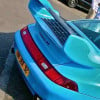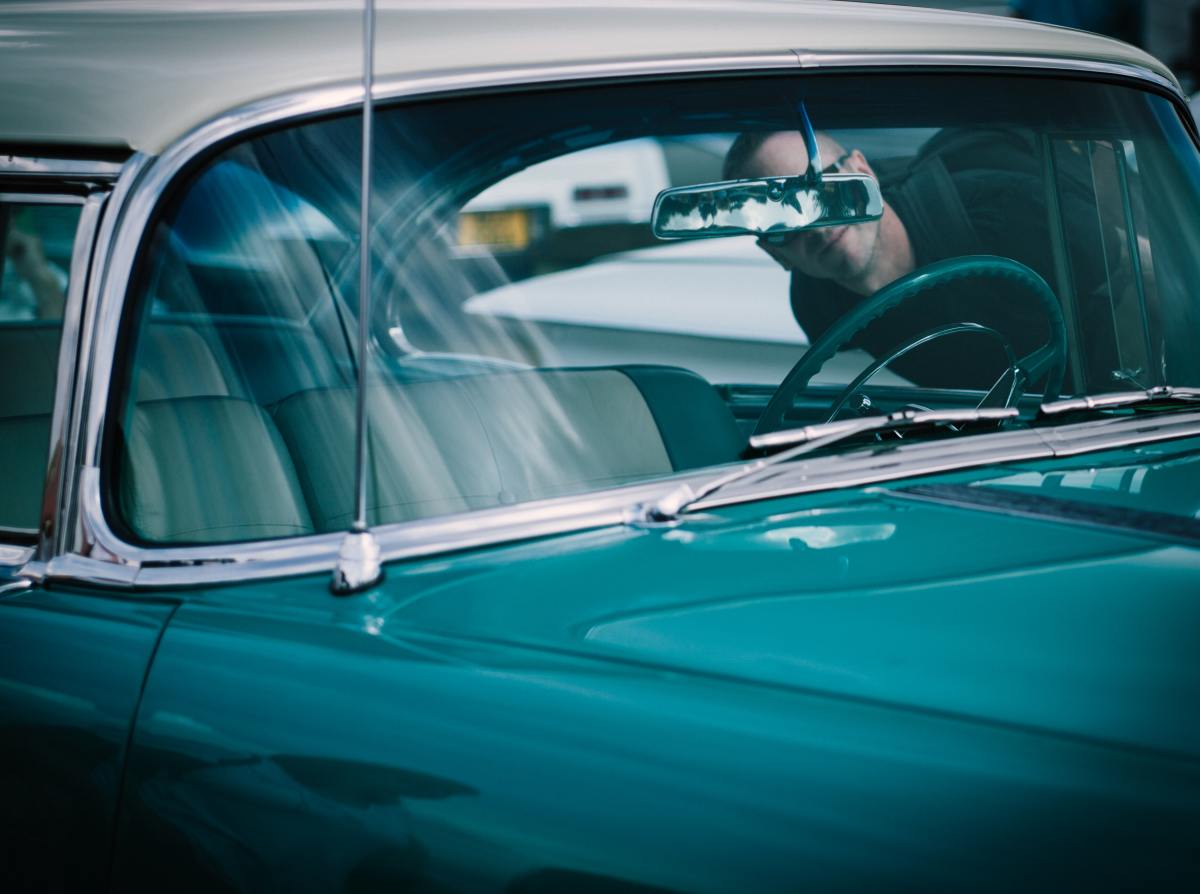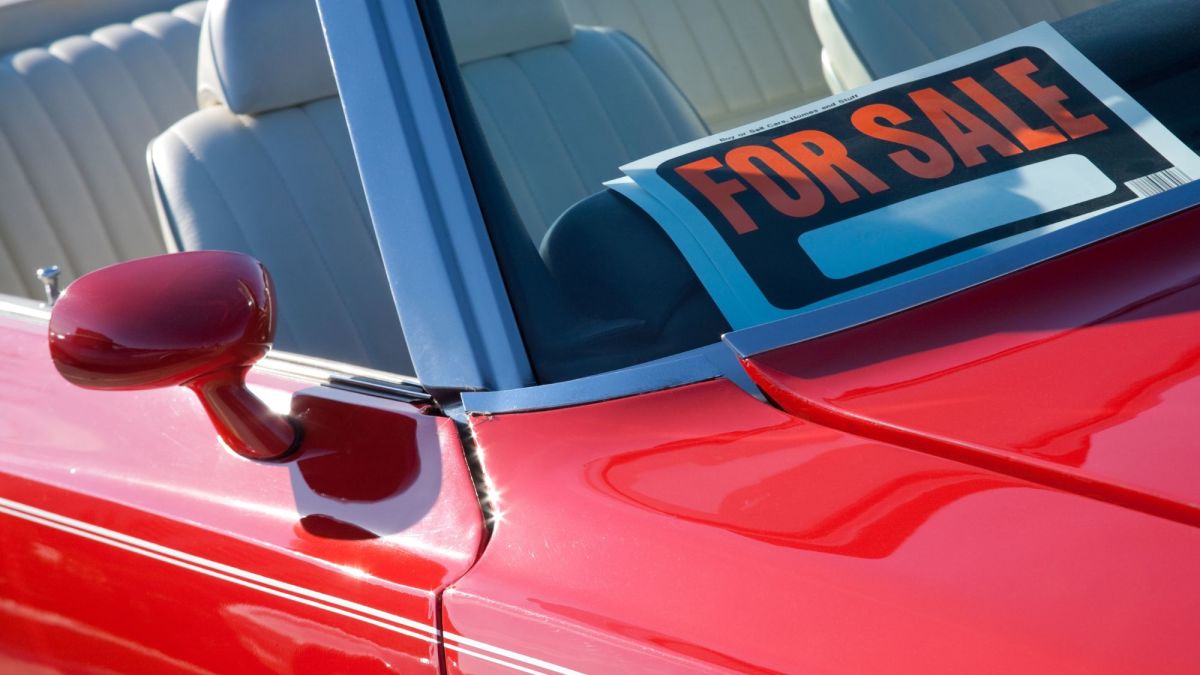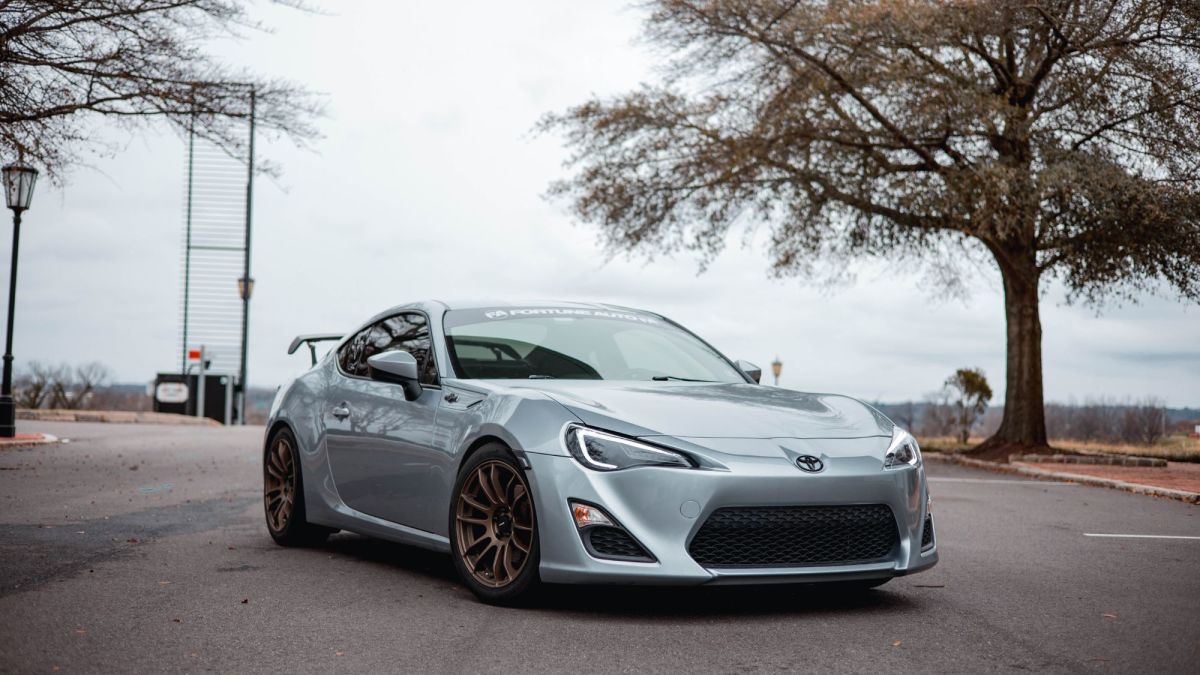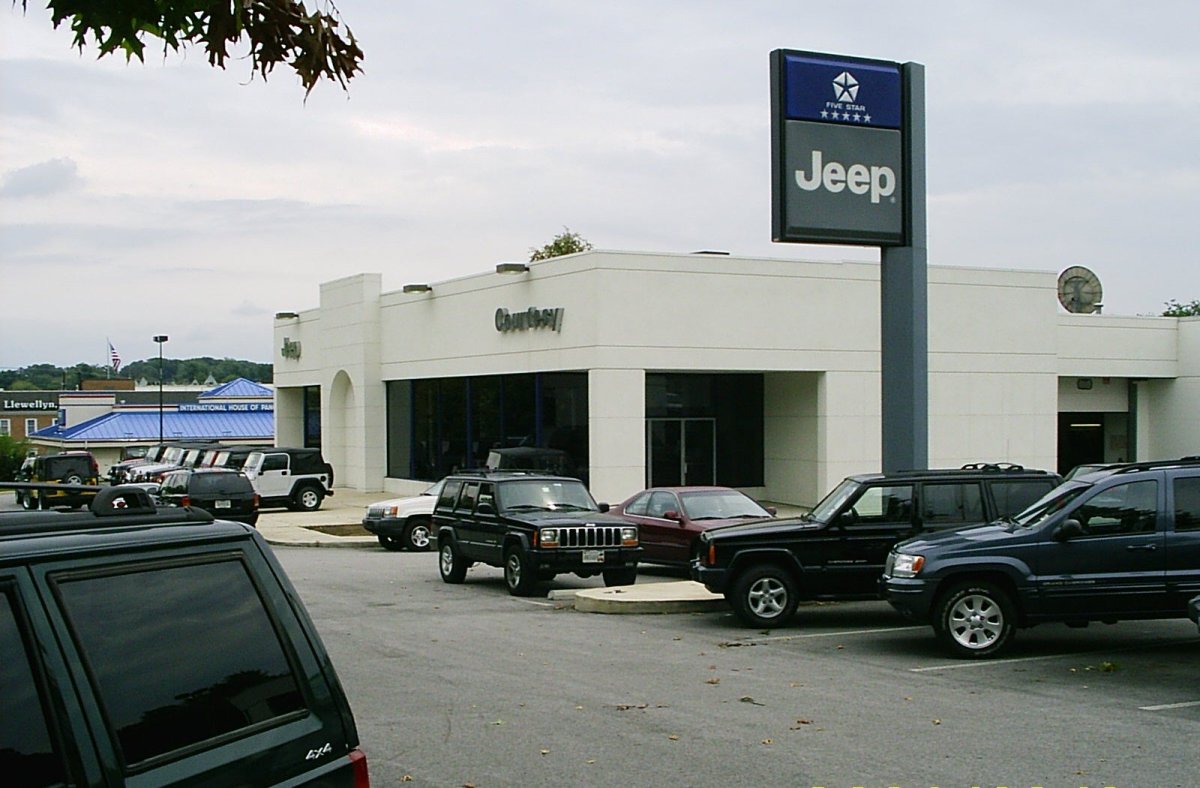How To Spot A Lemon
Buying a used car can be a daunting task and even with some car knowledge you can still end up buying a lemon. I have loved cars since I was a kid and have bought and sold many cars and car spares. Over the years I have found many signs that warn you of a lemon but will be blind to the untrained eye. This is a guide to show you what to keep an eye out for when buying a car. Some of these tips will be ones that mean you should walk away*, some will be ones you can use for bartering the price** and some will be observations to give you an idea of what you're buying*** these ones are not a bad thing but will give you a bigger picture of what they indicate. You'll be amazed at what you can figure out by the adverts pictures and its descriptions. Some people don't realise how much they're giving away. I'll also include some general tips of what to check when you're actually viewing the car.
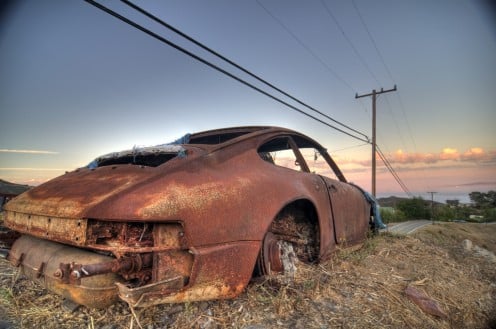
Check the oil and if its not where it should be*
Checking the oil is an important check when you're viewing the car. What you want to do is check it's level using the dispstick and and look at the oil filler the itself. The dipstick will give you the level and condition of the oil. If the advert says regularly serviced but the dipstick shows low level and a dark black oil, you know the seller is telling porkies. You remove the oil filler cap to check that there's no water mixing with oil (this would be a sign of headgasket problems). The indication of headgasket failure is that there's a white creamy residue on the oil filler cap. Lets say your oil level is fine, theres normal on the oil filler cap does that mean everything is ok? No, there's one more check you can do and that is to look on the floor of where the car is regularly parked. If there's a oil patch on the floor then it could mean the car has had problems and cleaned up.
Single Key in the ignition with a plastic tag***
Now this is something you may not spot. This is something a dealer would do. Due to dealers, auctioneers, breakers, insurance companies stocking many cars they will only use the car key and add a plastic tag to have the car's details it opens and starts. So you might think that you're looking at a private sale but if the advert pic show a single key in the picture then you'll be buying from a dealer. This isn't neccassarily a bad thing but remember you'll be buying a car from someone who is trying to make money as apposed to someone looking to sell their car. Another sign this could is that the car could have been involved in an acciednt. As mentioned above many trades will only use the car key, rather than having their personal keys attached. So the car could have gone to one of the above trades at some point. So always do a vehicle check.
Bodylanguage
I just went and looked a at a car today and this sign jumped out at me. The car had some obvious cosmetic defects, which I will go in to below as to what cosmetic defects are acceptable and what set alarm bells ringing and as I was doing this, I also noticed how close the seller was to me, he was constantly following me around the car. This is not a good thing. Ever broken something when you was a kid and you followed your parents about to distract them away from what you had done but you end up getting found out because of your unsual behaviour. This gave me a bad vibe and made me feel he had something to hide. This doesn't show someone being very confident in what they are selling. If you was selling your pride anf joy, you'd stand back and let the buyer walk round freely as you'd have nothing to hide. This car also had a single key in it, so I asked if it was his car and it wasn't, it was taken in part ex from a friend of a friend. ding ding ding!
I'll be updating this hub frequently I have so much more to share.
Wheel Spacing
Pictures of the car in the advert will give this away but you should also look out for this when you view the car. With the boom of the internet repairing cars is a lot cheaper these days and also easier. What I mean by wheel spacing, is where the wheel sits in relation to the arch. It should be central, giving an even gap in front and behind the wheel. You'll want to look at the back and the front wheels. If it sits excessively back or forward then chances the car has been in an acciedn't. If the right wheel sits far back and the left wheel further forward then the car should have chassis problems. This tip, is a very important one because the rest of car might look normal but this observation can save you a lot of money. A defect like this can make the car very hard to drive if not dangerous have not on effects like excessive tyre wear and if the car was involved in accident it could be worse due to chassis already being defective. If you spot this in the car you are looking at read the description also and see if the car has had new wishbones, front tires, brakes, anything wheel related. The seller might think they're sounding clever by listing expenses spent on the car but this just confirms that the car has been repaired from an accident rather than the parts replaced from general wear and tear. You'll be surprised how many cars for sale have this wheel spacing defect. It seems to be the thing to do these days, buy new damaged cars and repair them sell them on as new cars. The thing is the damage might not be recorded so this is why you need to keep your eyes peeled in the photographs. This tip is a big give away of Lemon. Walk away.
Slightly different coloured panels
Anyone can spot this and you probably already have in the past but not thought much of it. Now this tip is about slightly different coloured panels, not blatant completely different coloured panels. Have a look at the pictures of the ad and look at the door, the doors are a good point of reference if there is different coloured body panels elsewhere. If there is then this means the car has been repaired at some point. Silver cars are the worse for trying to hide this, red cars can also come up yellowy in flashed pictures. If a panel is a slightly different colour it might not be a big deal. A front wing or door is not too big a deal, rear quarters and bonnets can mean accident damage. That being said if the car has been keyed in the past then this could be the reason for the re spray. You can use this observation as a bartering tool but if the paint is dull when you view the car, lumpy or has embedded lines this is an indication of bodyfiller (bondo) not good and a sign to walk away. This one is down to you as whether the repair is dodgy or superficial.
Parts changed and short ownership
Its good to list what you've spent on certain things for your car. New tyre's that's great, new timing belt that's good too but when someone starts listing a long list of parts that seem to be in the same category for example sensors, coil packs, spark plugs. This is indicates there's a problem with the car that is trying to be fixed and a heap of new parts has been thrown at it. This is usually coupled with a short ownership of the car with the seller or the car is coming up close to test time. So if a long list of parts have been recently bought, then it's sometimes not a good thing because it could mean the car has a problem and still isn't fixed. If there's a lot of new parts for underneath a car like sumps,wishbones, track rod ends, exhausts, then this is indication of a bump. If the car has a lot of owners and isn't very old then there's a reason why some many people are moving the car on. It's good to see maintenance parts listed or upgrades.
Indicators Of Excessive Mileage
Todays cars can do higher miles, 20 years ago a car that had done 100k would be past it but cars today can do 2 to 3 times that much if they're looked after. Although you wouldn't want to buy a 3 year old car with 150k on the clock. Back in the day a lot of "clocking" was going on. Clocking is where people would put the back the mileage, it was simple to do all you needed was a drill attached to the speedo cable. These days cars have brains (ECU) that controls pretty much everything these days, so nifty tricks are not so easy. If you're buying an older car with an analog tachometer ( Tells you how many miles it's done ) rather than a digital one the way you tell if they car has been clocked is if the number don't line up properly this is usually coupled with little or no history. With a newer car clocking is still done dodgy dealers but not so easy to do and not so easy to detect. To tell if a newer car has been clocked is if the steering wheel is excessively worn or if it has been changed for a new one, worn down pedals, bolster wear on the drivers seat and a hole in the car by the throttle pedal. If the car has average mileage but all of the above are showing then it could have been clocked or the car has been used a lot, like a rep car. If the mileage and wear and tear add up then you might grab a bargain but remember the parts on the car have been through just as much mileage and you could be replacing a lot of parts in a short period of time. Some high milers are too good to miss but keep an eye for clocked cars. Less than average miles + more than average wear + little to no history = Something fishy.
What's in the pics
The ads pictures can be a big give away of what type of car you're buying and who you're buying from. Parked in an industrial estate, pro pic taken at the track, on the drive outside a mansion. These can all tell how well the car has been kept. The other things you want to look out for is what's actually in the car. If there's a gallon of oil in the passenger footwell or a can of easy start on the passenger seat you know this car has problems. If there's a petrol can in the boot with the nossel already on it, the owner runs the car on fumes. If they can't afford fuel then they're unlikely to be about to afford repairs. Anything that should be kept in the boot for emergencies, jump leads for example and is in the front of the car means the owner is keeping them close to hand. Just look at everything inside the car see if there's anything not right.
Quick Sale Needed
When you see this it's a good sign to get some money off the price that's already been listed, which is usually lower than normal. There are precautions you still need to take when you view a car that had "Quick Sale Needed" on the ad. Sometimes people need a quick sale because they need the money this is where it works in your advantage as the seller is likely to take a low offer. The flip side to this is people need a quick because the car could be a pain in the butt with a whole host of problems. Quick sale needed on a convertible being sold in the winter means you know that the roof leaks. There's also another thing to look out for on these type of sales. With finance and Hire Purchase so easy to obtain these days for anyone 18 and above, this gives us another thing to keep an eye out for. The seller wanting a quick sale could mean that there is outstanding HP on the car and the car could be in the process of being repossessed by the finance company, so the seller might want to get the cash for the car and the finance company won't know where the car is to collect. The seller has your cash and you have a car that is "marked" as such. I don't know the ins and out of cars with outstanding finance still on them so you will need to do some homework if you do find a car that still has this. If you buy a car that has got outstanding finance and is due to be repossessed because of the seller non payments then you could find yourself car less and cashless. In the UK you can do vehicle checks to find this out, it will also let you know other things like if the car has ever been reported stolen or in an acciedn't, so they're worth the money to have done if the car you intend to buy is in the high thousands. A HPI check is a must if the car you're about buy is 5 years old or younger.
Panel Gaps
Painting a car is a fine art and the people who make a good living from it are perfectionists. They will not let a car go out of their bodyshop unless the paint was perfect. This also goes for panel gaps. You may have never thought about this before but the gaps in between each panel is a constant distance apart from every panel around the car. This is how the car would leave the factory and those gaps would not change from normal everyday driving. Next time you go past a showroom have a look a brand new car and check the gaps between the door, wings, bonnet etc. Exactly the same gap all the way round. So check the pictures in the ad and look for obvious close or large gaps. This is an instant indication of accident damage and a quick poor repair. As I said above panel beater's are perfectionist, so let's say that the car did go to a good sprayer, if the panel gap is still bad then they might not be able to get a perfect gap if the acciedn't damage was bad. If the car no longer lines up they can't do anything about the panel gap. So panel gaps can give away accident damage and also bad body damage. Look around the rear lights and look at the gap between the boot and the lights on both side. Also look at bonnets and front bumper gaps.
If you're buying a car that has recently been restored and has very poor panel gaps all over, then the car is all over the place. It's likely the floors have been taken out ( which is usually because they were rotten ) or the car was seriously damaged in the past but due to the price of that type of car in mint condition people will buy badly damaged cars and restore them knowing like they'll make a profit. If someone found an original genuine 73' 911 Carrera RS shell with they roof cut off it would still be viable to restore it and make a profit. Look out for those panel gaps! Bumps here and there on a car are gonna happen so a wing slightly out of place isn't always a major thing.
Turbo's
One of the best inventions in the world. FACT! I am a massive turbo fan and I'm a sucker for a car with a turbo strapped to it. Turbo's are being used a lot more these days, especially on diesel engines. I could go on forever about turbo hot hatches but I might write another hub on those. This part is general tips on turbo chargers. Petrol Turbos and Diesel Turbos have the same fundamental principles but yes they are different technically. When you're looking at buying a car with a turbo, oil is more important than ever so make sure you do the oil check I mentioned above. Look for leaks all over the engine bay also, it doesn't take much of an oil starvation for the turbo to let go, they run extremely hot and need oil. Synthetic should always be run on a turbo car although they will run on normal oil but it's not clever. If the turbo is nakered this car be shown in two ways. First is if the car puffs out a tinge of blue smoke the turbo can be on it's way out. Second is to drive the car at 30mph in top gear and plant your foot. This will put the turbo under massive load and if the turbo is shot or on it's last legs it will dump a heap of smoke out the back this may come out black which will be fuel and you'll feel a lack of power. If it's blue then the bearings are shot and the turbo will eventually pull itself apart. If the turbo is in good condition you will feel a gradual and then sudden burst of power.
